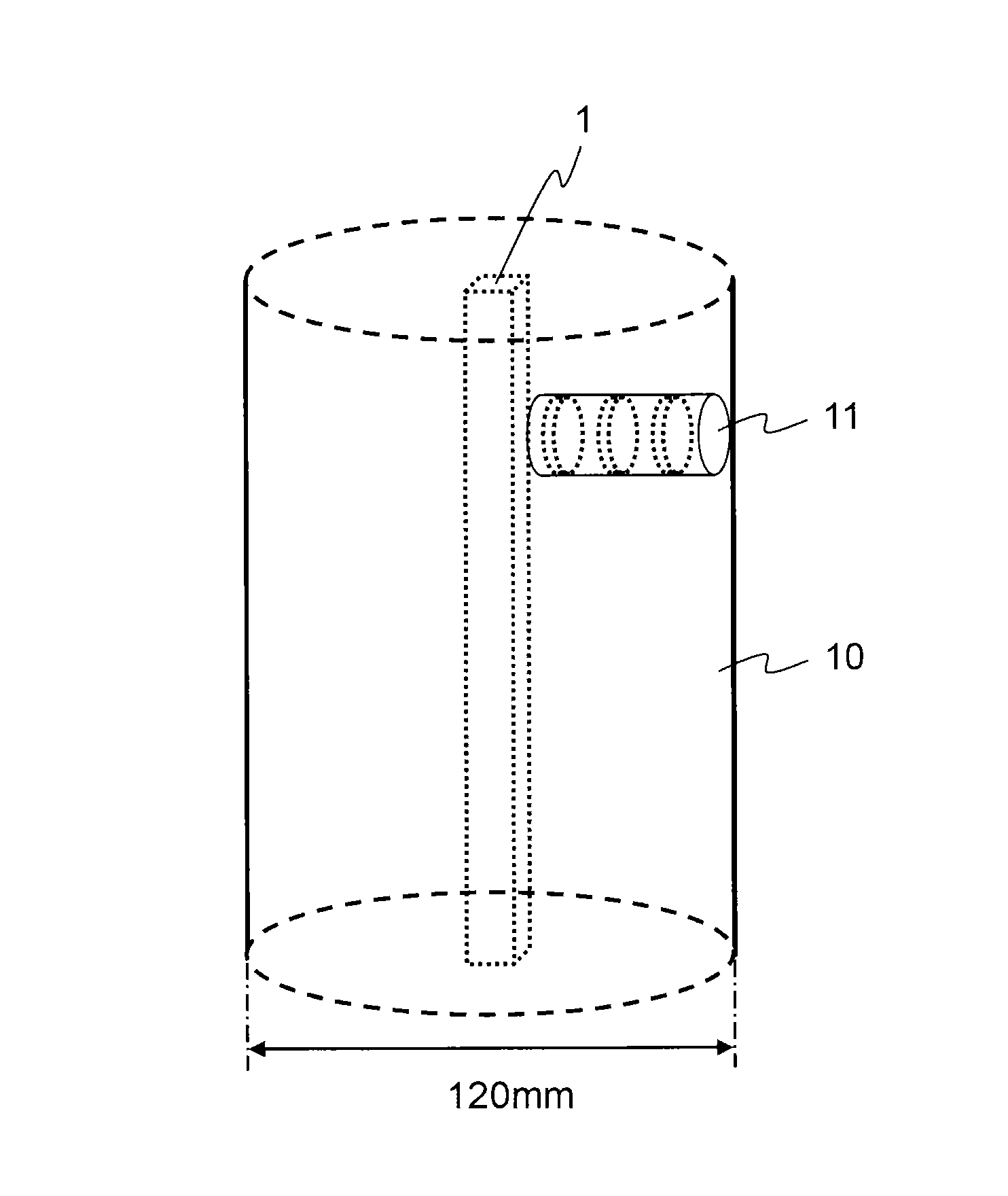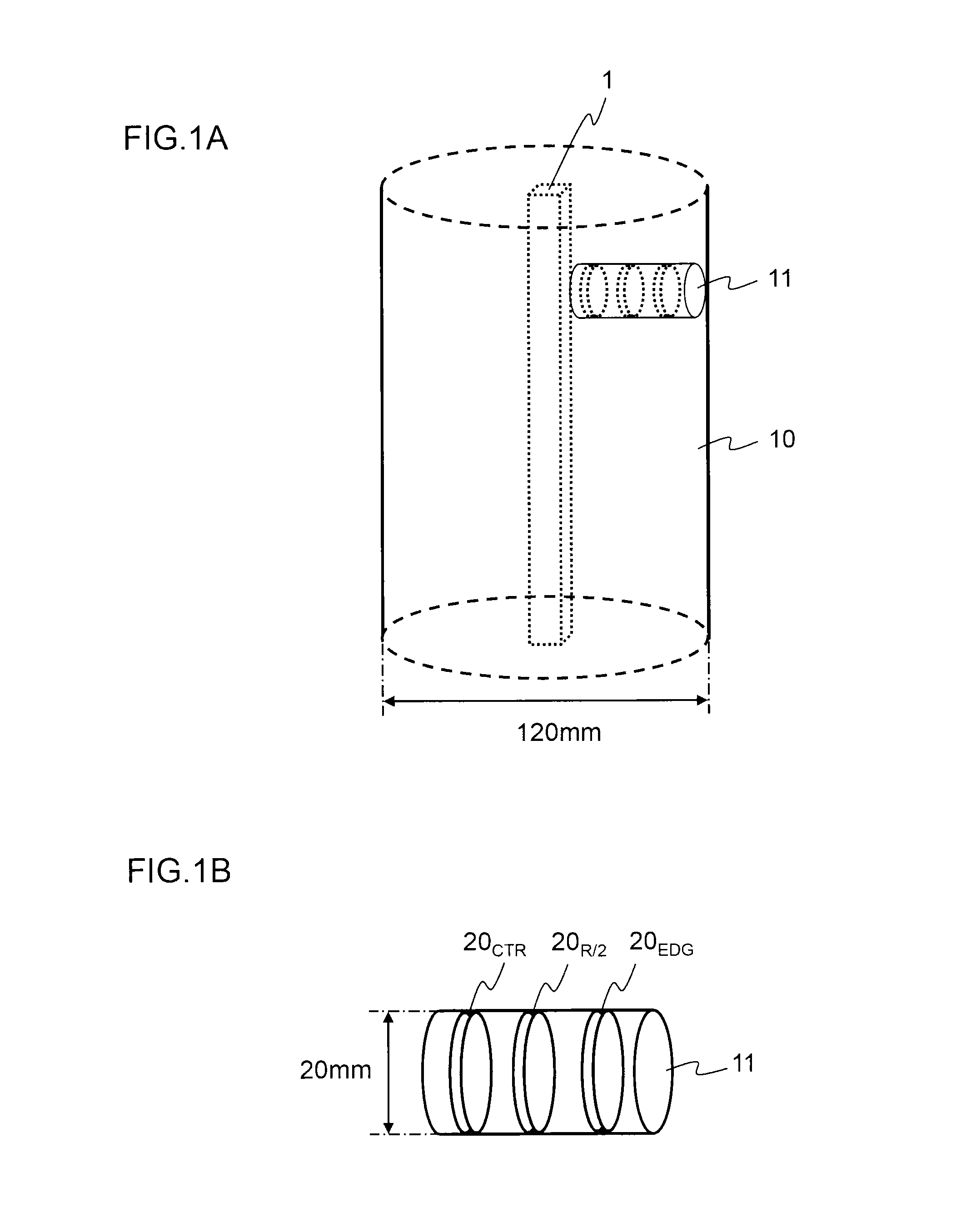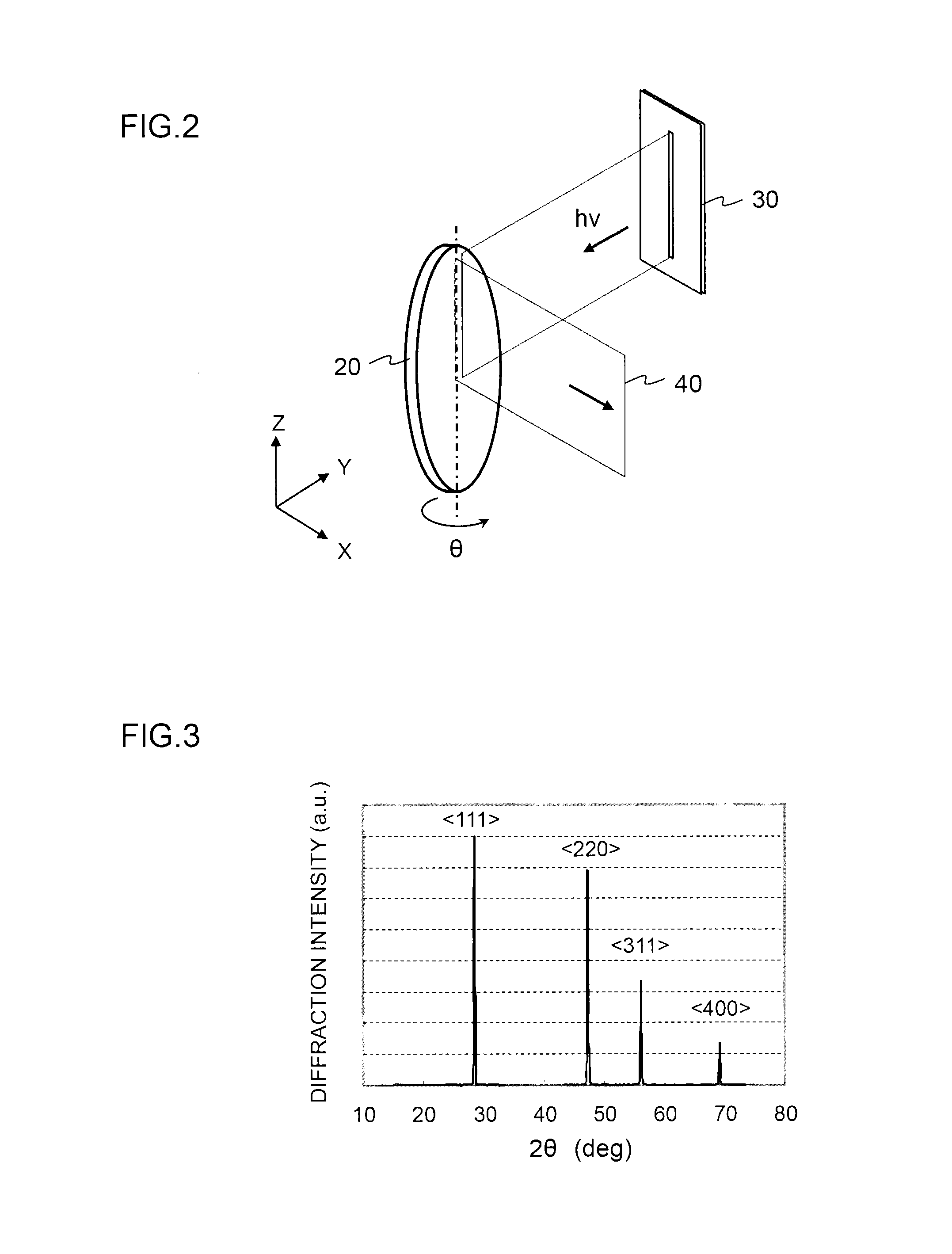Method for evaluating degree of crystalline orientation of polycrystalline silicon, method for selecting polycrystalline silicon rod, polycrystalline silicon rod, polycrystalline silicon ingot, and method for manufacturing monocrystalline silicon
a technology of polycrystalline silicon and crystalline orientation, applied in the direction of silicon compounds, material analysis using wave/particle radiation, instruments, etc., can solve the problems of induction of dislocation generation, loss of crystal lines, defect formation, etc., and achieve the effect of stable manufacturing of monocrystalline silicon
- Summary
- Abstract
- Description
- Claims
- Application Information
AI Technical Summary
Benefits of technology
Problems solved by technology
Method used
Image
Examples
examples
[0065]Six polycrystalline silicon rods grown under different deposition conditions were prepared. Approximately 2 mm-thick disc-like samples (20CTR, 20EDG and 20R / 2) were taken from the three locations illustrated in FIGS. 1A and 1B for each of these polycrystalline silicon rods (silicon rods A to F). Using the measurement system illustrated in FIG. 6, φ-scan charts of Miller index faces and were obtained. Note that the diameter of the disc-like samples 20 is approximately 20 mm.
[0066]Table 1 summarizes the diffraction intensity of a baseline (BL) for each of the disc-like samples obtained from these polycrystalline silicon rods and the presence / absence of the loss of crystal lines when monocrystalline silicon rods were grown by an FZ method using the polycrystalline silicon rods.
[0067]
TABLE 1Plate-BL IntensitySiliconlike(kcps)Max / MinDivision ValueLoss ofRodSampleI<111>I<220>I<111> / I<220>Crystal LinesA20CTR6.84.01.461.431.70No20R / 28.04.81.6720EDG9.95.71.74B...
PUM
| Property | Measurement | Unit |
|---|---|---|
| diameter | aaaaa | aaaaa |
| length | aaaaa | aaaaa |
| diameter | aaaaa | aaaaa |
Abstract
Description
Claims
Application Information
 Login to View More
Login to View More - R&D
- Intellectual Property
- Life Sciences
- Materials
- Tech Scout
- Unparalleled Data Quality
- Higher Quality Content
- 60% Fewer Hallucinations
Browse by: Latest US Patents, China's latest patents, Technical Efficacy Thesaurus, Application Domain, Technology Topic, Popular Technical Reports.
© 2025 PatSnap. All rights reserved.Legal|Privacy policy|Modern Slavery Act Transparency Statement|Sitemap|About US| Contact US: help@patsnap.com



